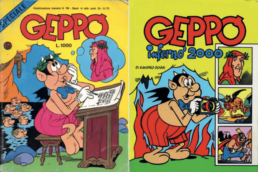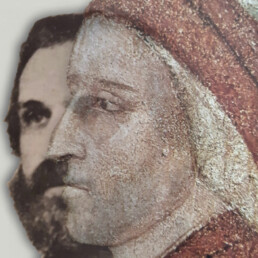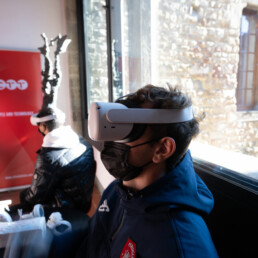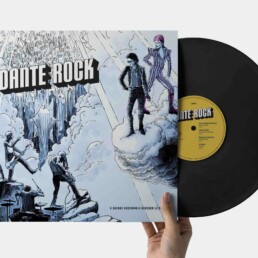Dante pop phenomenon: relationship with the world of comics explored in the volume titled “A riveder la china”
Curated by Leonardo Canova, researcher at the University of Pisa, it’s freely available online

During the celebrations for the 700th anniversary of the death of the poet, we have often read the juxtaposition: Dante pop icon. The newly released volume titled “A riveder la china: Dante in Italian comics (and cartoons) from the 19th to the 21st century” highlights the relationship between the poet and the ninth art, uniting the world of Dante with that of cartoonists and illustrators who drew inspiration from his work and figure.
Guiding us along this path is Leonardo Canova, post-doc of the Department of Philology, Literature and Linguistics of the University of Pisa, who edited the book together with Luca Lombardo (Ca ‘Foscari University of Venice) and Paolo Rigo (University of Roma Tre).
The book is part of studies that analyze Dante as a pop phenomenon, delving into aspects that are still little explored. Out of about 1400 essays published each year on Dante’s work or life, only around sixty over the last 20 years have dealt with the relationship with the world of comics.
The volume can be viewed in open access and downloaded for free on the Edizioni Ca ‘Foscari website at this link.
How the book develops
The first section traces the poet’s presence in Italian comics from the late 19th century to the present day, providing readers with a sort of atlas of comics on Dante. The second part, curated by Valentina Rovere (University of Helsinki), combines the artistic aspect with the scientific one, hosting a gallery of previously unpublished illustrations and writings that were especially created by emerging artists and important exponents of the world of the ninth art.
From the archetype Gustave Doré to the most recent creations for the web, Dante travels through the most important junctions in the history of comics in Italy, alongside some of the most famous protagonists of these works.
One of the curators, Leonardo Canova, comments “Dante is still Dante, whether he finds himself replacing Lucifer in the role of tormentor as happens in the famous Mickey Mouse Inferno by Guido Martina, or interpreting a hypermodern version of himself in the extraordinary work by Marcello Toninelli, or even if he is reduced to an old man who escaped from a hospice as in Cattivik, or a penniless songwriter in Geppo”.
The representation of Dante
Protruding nose, red clothes and a hat or possibly a laurel wreath: the “face” of the Supreme Poet always remains the same, even if reinterpreted in different ways.
“Dante wanted to be popular, deciding in an almost revolutionary way to write in the vernacular, and, in fact, he was so right from the start. He was memorized, transcribed, and commented on like no other author in the world,” comments Leonardo Canova, “breaking down the undeniable linguistic barrier that today separates the poet’s work from readers. Comics can restore the popularity to the Comedy that it has always enjoyed“.
The book was created thanks to contributions from the Universities of Pisa as part of the PRIN Hypermedia Dante Network project, Ca’Foscari of Venice as part of the Vertexcult project, and Roma Tre.




